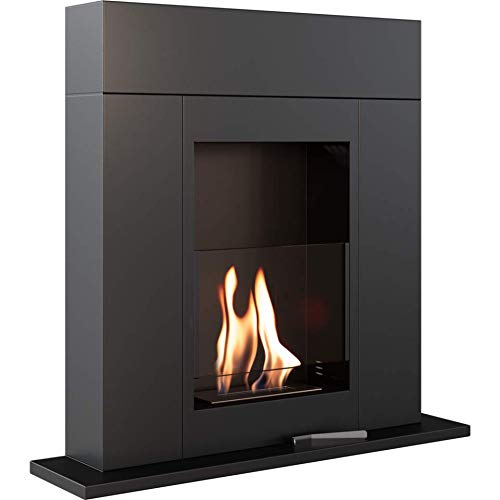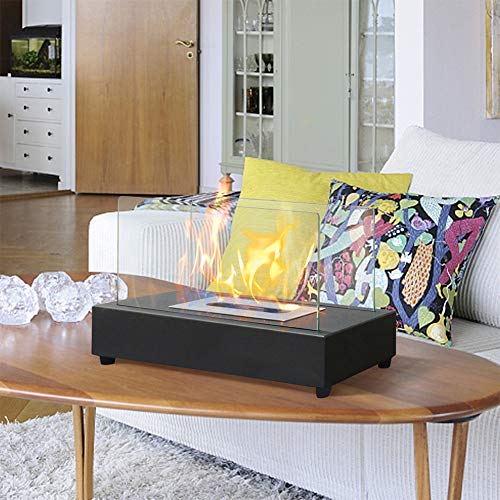7 Simple Tricks To Making A Statement With Your Bio Fire
페이지 정보

본문
 The BIOFIRE System and Your Immune System
The BIOFIRE System and Your Immune SystemThe BIOFIRE System offers syndromic testing for infectious diseases, allowing healthcare professionals to select the right test the first time. Patients benefit from faster diagnoses and more targeted therapy. Clinicians benefit from better stewardship of antibiotics. Labs save money and increase efficiency.
The BioFire FilmArray Pneumonia plus panel (PN panel) examines native sputum, endotracheal aspirate, and bronchoalveolar lavage specimens (including mini-BAL) for 33 pathogens that are clinically relevant and antimicrobial resistance genes, with semiquantitative results in about an hour.
Respiratory
The burning of biomass, such as wood, plants and Traditional Bioethanol Fireplace other organic materials creates gaseous pollution and fine particles that adversely affect the respiratory system. Climate change could make it more difficult to reverse the negative impacts of forest fires on human health.
In the United States wildfire smoke is associated with hospitalizations caused by respiratory illnesses like asthma, COPD, and lung cancer. This type of pollution can also increase the risk of developing cardiovascular diseases and is a major cause of the burden of disease in the most vulnerable populations.
Wildfires caused unhealthy levels of air pollution in numerous communities during the COVID-19 epidemic. The response of public health has been limited to a communication campaign about managing symptoms. This knowledge gap is alarming given the evidence that smoking cigarettes and other sources of poor quality air can lead to health issues.
Researchers are currently evaluating the best ways to safeguard the public's health in future events similar to this. NIH is a research institution that studies this important public health issue through the BLUE CORAL and FIRE CORAL studies.
For the first time an prospective cohort study will assess long-term outcomes from exposure to smoke from wildfires and other sources. FIRE CORAL recruits adult participants who are hospitalized for COVID-19 index episode and who speak English or Spanish however, they are not pregnant. The bio ethanol fire basket CORAL protocol includes a battery of tests conducted in-person, objectively measuring the pulmonary function test and lung imaging as well as functional assessments.
The lungs are particularly sensitive to the effects of smoke and other particles because they can trigger or exacerbate chronic respiratory diseases, such as emphysema and COPD and increase the risk of developing pneumonia. Smoke exposure can cause adverse effects on health. To lessen or stop these negative effects, avoid outdoor activities and wear the EPA "N95" mask. This mask is designed to catch small particles.
Smoking cigarettes can cause irritation to the throat, eyes and nose. To minimize symptoms, the lungs should be flushed by drinking plenty of water and taking medications that reduce inflammation, such as corticosteroids.
Bloodstream
Your bloodstream is at the forefront of fighting germs that invade your body. Dendritic cells are specific cells, serve as the call center for your fire department. They gather antigens from germs and release proteins to alert other white cells to fight off them. The total white blood cells, differentials and band cells grew after firefighters' fire-fighting duties, compared to levels after strenuous exercise without fire-fighting.
Skin
As the wildfires in California spewed smoke and ash into the air over the course of fall and winter, dermatologists were concerned about how it might affect the skin of those exposed to it. Maria Wei, a graduate student at University of California, Irvine is studying how severe wildfire pollution affects the skin. Her research was published on April 22, 2012 in Scientific Reports.
The study of Wei shows that the temperature changes of the skin dependent on the amount of time that the body is exposed. It takes upwards of two hours for the skin to reach its flash point--the point at which it burns and then turns into a ashy. It's crucial not to be close to a fire or campfire and wear protective clothing if out during a hot or humid day.
While it's essential to take precautions against fire-related pollution, there's no way to stop forest fires from occurring. Wei believes that as climate change causes forests to burn more quickly, the number of people who suffer from wildfires will grow. This means that more people will need to wear long sleeves and hats as well as thick moisturizers.
Air pollution from wildfires can cause atopic dermatitis to the skin, which is a condition that causes itchy skin for many people. She claims that the particles in smoke can clog up pores, making atopic skin worse.
Atopic dermatitis can make people more sensitive to UV light. This can be exacerbated by smoke from wildfires. This can lead to people seeking out tanning salons and get tanned with less protection.
While a cold and bioethanol fire insert facial may reduce the effects of atopic dermatitis, it is not safe for anyone who has an open wound or a rash on their face. Patients with active acne should avoid it, and if you're breastfeeding or pregnant, it's recommended to avoid this treatment altogether. The IS Clinical Fire & Ice Facial, at Novuskin Las Vegas' premier membership MedSpa is a results-driven intensive facial that bridges between the mild facelift and the peel, with no time off. It is designed to resurface skin, Built in bioethanol fireplace improve rosacea, decrease acne scarring and fine lines and stimulate cellular regeneration. It's an incredible treatment that will give you radiant skin.
Infections
The human body is made up of a complex set of organs and tissue which work together to protect us against infections. Infections can be caused by microorganisms like parasites, viruses and bacteria that invade healthy cells and cause them to multiply uncontrollably. When this occurs, your immune system may respond with symptoms of illness. These symptoms can include anything from a stuffy or runny nose to a stomach upset and can include a fever high, swollen glands, and a rash. The symptoms you experience can be affected by the type of disease, its location, and even your temperature.
Infections can spread in a variety of ways, but most commonly through droplets in the air that remain after a sniff or cough. This is how bacterial infections such as tuberculosis, strep and meningococcal illness, as well as viral infections such a common cold and influenza, are transmitted. Some bacterial infections, such as skin infections and sexually transmitted diseases (STIs) like gonorrhea and chlamydia, are spread by direct contact with infected tissues or mucous membranes as well as indirect contact with contaminated surfaces. Certain bacterial infections are carried by bugs such as mosquitoes, ticks or fleas and can be spread by bites from these bugs you.
The parasites, viruses, and other microorganisms are small bioethanol fire enough to enter the bloodstream and cause infection to your cells. This can lead to serious illnesses such as the common cold or AIDS. Fungi cause many skin conditions such as ringworm and athlete's foot, while some infect the lungs or nervous system, such as the rabies virus.
The BioFire Panel uses our innovative FilmArray technology to analyze the sputum and bronchoalveolar fluid samples for a comprehensive listing of pathogens involved in upper respiratory infections. The kit includes the reagent pouch which stores all the chemistry needed to perform reverse transcription PCR, nested multiplex analysis and detection on a single machine. This is a straightforward solution that helps clinicians identify and treat patients suffering from various respiratory symptoms. This test has received an Emergency Use Authorization and is available through bioMerieux's CLIA moderate and high complexity labs.

- 이전글What's The Current Job Market For How Much Fabric For 2 Seater Sofa Professionals? 24.10.31
- 다음글кто написал песню молитву аве мария 24.10.31
댓글목록
등록된 댓글이 없습니다.